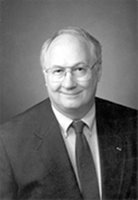Playboy and the Making of the Good Life in Modern America. By Elizabeth Fraterrigo.
New York: Oxford University Press, November 2009. Cloth: ISBN 978-0-538610-3, $29.95. 320 pages.
Review by Ron Briley, Sandia Preparatory School, Albuquerque
The extent to which ambiguity and paradox rather than consensus and conformity characterized the 1950s is evident in the fact that amidst the cultural celebration of the suburban family unit, Hugh Hefner in 1953 launched publication of his magazine Playboy, which both challenged and supported mainstream values of the era. The paradoxical nature of Playboy’s contribution to American culture is astutely analyzed by Elizabeth Fraterrigo, Assistant Professor of History at Loyola University Chicago, in Playboy and the Making of The Good Life in Modern America. Although Hefner assisted Fraterrigo with her research into the history of the magazine, the publisher and professional playboy might be disappointed that despite his revolutionary cultural aspirations and claims, Fraterrigo concludes, “Interest in maintaining clearly defined differences between the sexes meant the magazine sustained stereotypes and assumptions about women’s place relative to men, affirming a framework of privilege” (211).
Nevertheless, Fraterrigo does acknowledge that Hefner and Playboy did play a significant role in shaping the consumer culture which characterized post-World War II America. Reflecting his personal dissatisfaction with married life, Hefner attempted to establish a publication that would interrogate postwar visions of suburban domesticity by catering to the interests of the urban, heterosexual, consuming, and single male. Hefner hoped to fill the void which an increasingly tepid Esquire occupied during the 1930s. Hefner argued that he was liberating both men and women by questioning Puritanical notions of sexuality confined to the marriage bed, but as Fraterrigo notes, males retained the dominant position in this more liberated culture where the fulfillment of individual desire was encouraged.
The bachelor who postponed the responsibilities of marriage and parenthood was free to pursue female seduction. To lure his female prey, the playboy would need to impress possible sexual partners with such consumer goods as fine food and wine, sports cars, fashionable apartments and attire, and the latest technological innovations in television and high-fidelity equipment. The ideal playboy was a sophisticated consumer who traveled extensively and appreciated contemporary art, jazz, and culture. In contrast with the suburban environment of the family home, the playboy’s domain was the city, where he could pursue female companionship and other status symbols of the good life. In order to afford this lifestyle, Hefner advised his readers to work hard and play hard. He wanted the country to return to the prosperity and individualism of the 1920s that were eroded by the self-sacrifice required during the depression and World War II. Just as Hefner combined work and pleasure in his Playboy offices, bachelors would find satisfaction in meaningful labor, which provided them with the resources to pursue pleasure and material goods. Thus, Fraterrigo writes that Hefner became “an important spokesperson for the liberal consensus that developed during the Cold War, which presumed that economic growth and private consumption would serve as the wellsprings of prosperity and a more democratic society” (49). In addition, Cold War concerns that homosexuality presented a threat to national security were addressed in Playboy’s affirmation of heterosexual virility.
But to pursue this sexual path, playboys needed playmates such as the single girl celebrated by Helen Gurley Brown. The single girl was willing to support herself, lived alone, postponed marriage, and most importantly engaged in sexual activity outside of wedlock. While the single girl enjoyed a degree of freedom and independence, Fraterrigo asserts that the single girl, similar to the Playboy bunnies, relied upon their sexual allure and failed to fundamentally challenge male prerogatives.
Nevertheless, Fraterrigo observes that as the Playboy empire reached its zenith of influence in the late 1960s and early 1970s, its demise was contained within the increasing cultural acceptance of its message regarding consumerism, pleasure, and individualism. During the civil rights movement, Playboy was criticized for perpetuating “white” definitions of beauty. In response to these critiques, Playboy did expand its centerfolds to provide greater racial diversity, yet such images often focused upon the exotic “other.” Fraterrigo, however, does credit Hefner with using his checkbook and editorial pages to support a more egalitarian racial society. But Fraterrigo suggests that Hefner found it more difficult to square his Playboy philosophy with the emerging counterculture and feminist movements. Playboy’s celebration of sexual freedom and individual pleasure resonated with the hippie idea of “doing your own thing,” but the counterculture, despite Playboy’s questioning of the Vietnam War, rejected the materialism of the Playboy lifestyle, which embraced the status quo.
Even more problematic for Hefner was the emergence of feminism. Hefner claimed that he was shocked to be attacked as a pornographer, for he supported such feminist issues as the Equal Rights Amendment, abortion, and reproductive rights. Yet, many feminists insisted that Hefner represented a sexual revolution that continued to foster objectification and exploitation of women. Some anti-pornography feminists in the 1980s made common cause with conservatives who condemned Hefner and Playboy for undermining the American family and traditional values.
Confronted with these challenges and fading health, in addition to the unfavorable publicity surrounding the murder of Playmate Dorothy Stratton, Hefner in the late 1980s took another stab at domestic bliss, marrying Kimberly Conrad and turning over operation of the Playboy empire to his daughter Christie Hefner. After a decade of domesticity, Hefner has returned to the Playboy lifestyle. Fraterrigo concludes that Hefner and Playboy continue to resonate in American culture because Hefner’s views are today part of the mainstream. Fraterrigo asserts that Playboy “played a catalytic role in the refashioning of gender roles and sexuality mores since the 1950s, and its underlying messages about pleasure, consumption, and the freedom to find fulfillment in a lifestyle of one’s own choosing are now cornerstones of American culture” (210).
Some readers may find Fraterrigo too kind to Hefner. In his masculine consumer ethic, older women appear to have built-in obsolescence and are to be replaced by newer models. Thus, we have the sad and almost comical scenario of a nearly ninety-year-old Hefner, propped up with Viagra, frolicking with twins in their late teens. This ageism and sexism constitute insidious elements of the Hefner legacy. Nevertheless, Fraterrigo in her examination of Hefner and Playboy has produced an insightful book which enhances our understanding of the paradoxes inherent in American culture and sexual attitudes in the post-World War II era.
Subscribe to:
Post Comments (Atom)







No comments:
Post a Comment